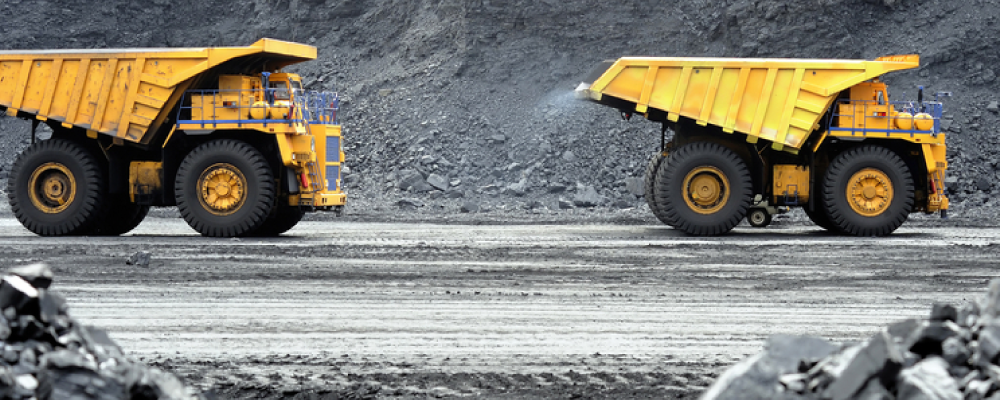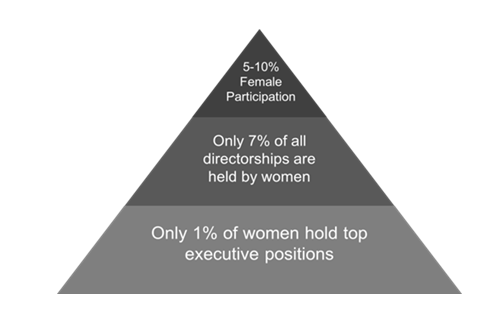Drop off your CV
We'd love to hear from you. Send us your CV and one of our specialist consultants will be in touch.

Despite the vast leaps made in mining technology, the traditional make-up of the workforce has yet to see significant change. The global imbalance is staggering compared to many other sectors; women only make up 5-10% of the mining workforce globally, and of the top 500 mining companies globally, only 7% of all directorships are held by women. In addition to this only 1% of women hold top executive positions within mining companies, with females comprising only 5-10% of the workforce as a whole.

Yet studies have shown that there is a positive correlation between business growth and gender diversity. Companies with more females, and specifically female staff on their boards, showed overall better performance: better safety, more efficiency, added sustainability and higher profit margins. Companies with women on their board outdid companies with an all-male board by 17-26% over a six-year period in their stock market performance from a 2012 Credit Suisse Research Institute Report. In addition to this, companies with two or more women on the board experienced profits of 6.4% over a six-year period compared again to an all-male board which averaged losses of 2.86% in the same period from a PWC report. The consensus seems to be clear - company diversity brings new perspectives, new ideas, and crucially, business growth.
There is a negative perception surrounding mining which is thought to be one of the main factors which has led to low female participation. The perception is that mining is a ‘man’s job’ because it is thought that physical strength is the most important skill for the sector; however, this is far from the truth in modern day mining.
In the UK this negative perception was fuelled by the 1842 Mines and Collieries Bill which made underground mining illegal for women which was a significant barrier to entry for women in mining. Similar barriers previously existed globally too which deterred women from getting involved in the sector. The lack of women in mining means that there are few female role models for aspiring girls and women to look up to. This is likely to deter female participation further and add to the problem by creating a negative perception of women’s role in mining. Encouraging personal development for women already in mining would be highly beneficial.
This problem has been recognised within the sector and there have been active measures to try and bridge the gender gap by enticing more women into the sector. To plant the initial seed of interest in mining, a campaign focussed on the new generation has been launched, named ‘Let Toys be Toys’. This is a campaign to reduce the gender gap in the mining/engineering and technology sector by encouraging companies to stop gendering toys. This approach is hoped to overturn the underlying stigma and help girls become interested in a career in this sector.
The next step in the solution is at the school level with the investment and promotion in STEM subjects to ensure people are getting involved in these subjects with the aim of them pursuing them further. T-Levels is the advancement for 16-19 year olds which will be implemented in 2019 to provide greater technical skills rather than just academic skills to reduce the skills gap. The aim is to provide a clearer pathway into this sector which encourages greater participation but also increases the skills within the industry; this will ensure the workforce is working to meet the capabilities of new technology which is emerging.
Mentoring – be this by female role models already in the industry or more senior males on board with the scheme – would be an easy way to encourage women to pursue higher level roles. Failing that, the introduction of quotas would prompt the necessary recruitment of women for companies to see the benefits. Quotas are already in place in other countries and have enabled key change: after introducing a quota as early as 2002 urging mining companies to employ at least 10% female staff, South Africa’s mines now boast a work force in which 21.05% are women, figures nearly five times higher than London’s 4.27%.
At graduate level, universities are trying to play their own part in reducing the gender gap by offering scholarships to women who want to pursue mining. The University of Exeter in partnership with the organisation Women In Mining are offering two scholarships this year for women who want to study a Master’s in Mining Engineering. Low female participation is also being tackled by the organisation Women In Mining, who in association with PWC, have listed 100 global inspirational women in mining. This document celebrates the fantastic female talent in the mining sector and helps to overturn a negative perception by showing a positive outlook for women in mining.
At CSG, we’re actively engaged in providing high calibre diverse candidates for the mining sector globally by working with leading companies. With a dedicated team of specialist recruiters working globally, we have access to an unparalleled diverse network of candidates and work closely with the Gender Balance Group in Sydney, Australia, helping global mining companies achieve the diversity they require. Examples of our recent placements include a CFO with a Junior Potash Miner and a H&S Manager with a Tier-1 Multi-Commodity Miner.
If you’re looking to add diversity and dynamism into your current workforce, or if you’d simply like to hear more about how the hiring market is shaping up, please don’t hesitate to get in touch at clients@csgtalent.com or call us on 0333 323 2000.
Global Mining Standards, Women in Mining: Steps, Strategies and Best Practices for Gender Diversity, 2016
PwC, Mining for talent: A study of women on boards in the mining industry, 2014
Colorado School of Mines Magazine, Vol.104, Are women the mining industry’s most underdeveloped resource?, 2014
Kathryn Allen, Bridging the skills gap, 2017
Women In Mining, 100 Global Inspirational Women in Mining, 2016
TechnoMine, Maurie Phifer, GIS in Mining, 2012